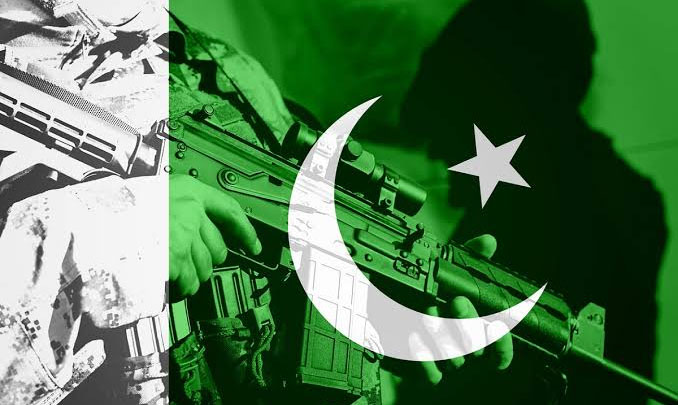With 53 journalists killed since 2012, 48 of them in the last four years, Pakistan is the fifth-most dangerous country for journalists to work, as the country moves from one crisis to another, the latest official report by the government says.
The plight of Journalists in Pakistan is summed up as being “between freedom to report and threat to life,” the report says.
They are part of the collateral damage, as Pakistan’s politicians squabble, and economic distress and natural disasters like the floods that were visited last year multiply public misery. All along, the powerful army and the ubiquitous ‘agencies’ – civilian, military and those patronised by the Islamists – do their ‘job’ in the “national interest.”
Minister for Parliamentary Affairs Murtaza Javed Abbasi told the Senate (January 20, 2023) that 42 journalists were killed in Pakistan in the last four years. The period mostly covers Prime Minister Imran Khan’s regime when Khan claimed “total media freedom” and also a few months of the current government of Shehbaz Sharif.
The latter has ordered a probe, with no tangible results so far, in the gunning down of high-profile television anchor Arshad Sharif. Amidst a raging political crisis, the scribe was reportedly on the run, from home to Dubai and fell in Kenya in an ‘accidental’ shooting as per the African government’s claim.
Other names of Pakistan’s media who faced persecution include Anwar Jan Khetiran, Taha Siddiqui, Hamid Mir, Raza Rumi, Sajid Hussain, Saleem Shahzad and Daniel Pearl among others who have either been killed, narrowly escaped death or currently live in exile.
An American national, Pearl, who wrote for The Wall Street Journal, was killed in 2002. The conviction of his killers was upheld by the highest court, but another bench dismissed it and released the convicts, despite appeals from his aged parents.
As per data from the information ministry, 15 of the journalists hailed from Punjab, 11 from Sindh, 13 from Khyber Pakhtunkhwa and three from Balochistan. The cause of death for these journalists ranged from being shot dead, targeted, killed by terrorists and many untraced.
With regard to the perpetrators, there have been no convictions in 96 per cent of the cases. In Punjab, the latest data showed that seven suspects were arrested out of which two were currently out on bail. In Sindh, four suspects had been arrested while seven were facing trial. In Khyber Pakhtunkhwa, two suspects were acquitted, four were facing trial and one suspect was on the run. In Balochistan, two suspects had escaped, one was facing trial, one suspect was sentenced and one suspect was facing an investigation.
Global media bodies say that journalists in Pakistan are no strangers to dangerous working conditions. In 2022, the International Federation of Journalists (IFJ) listed Pakistan as the fifth most dangerous country in the world report. In 2021, Reporters Without Borders (RSF) reported Pakistan’s drop of 12 points in the Press Freedom Index with Imran Khan given the title of “press predator.”
Pakistan was one of the five pilot countries to implement the United Nations Plan of Action on the Safety of Journalists and the Issue of Impunity in October 2013. Later, Pakistan committed to implementing the Protection of Journalists and Media Professionals Act 2021.
However, last October, Freedom Network’s Annual Impunity 2022 report which was released in the context of the 10-year anniversary of this Plan, showed that there have been no convictions in 96 per cent of murder cases of journalists in Pakistan between 2012 and 2022. In only two cases were the perpetrators convicted. The report revealed further that the criminal justice system failed to deliver justice for the slain journalists and their bereaved families.
The report added that more than half of the journalists did not inform their media employers, press club, union or local authorities about receiving threats. Additionally, less than 10 per cent of journalists who received death threats before being murdered informed their media employers, press club, union or local authorities. In most cases, even if there was an advance warning, the system and relevant stakeholders were unable to prevent the murders.
Death comes stealthily for the Pakistani scribes. Unidentified persons constituted the biggest suspected threat actor to journalists in Pakistan during 2012-2022 with 15 of the 53 journalists (or 28pc) murdered in the reporting period being targeted by them, according to the family members or colleagues of the victims. Organised crime and militant groups were the second and third most suspected perpetrators of journalist killings, respectively. (Ends)

